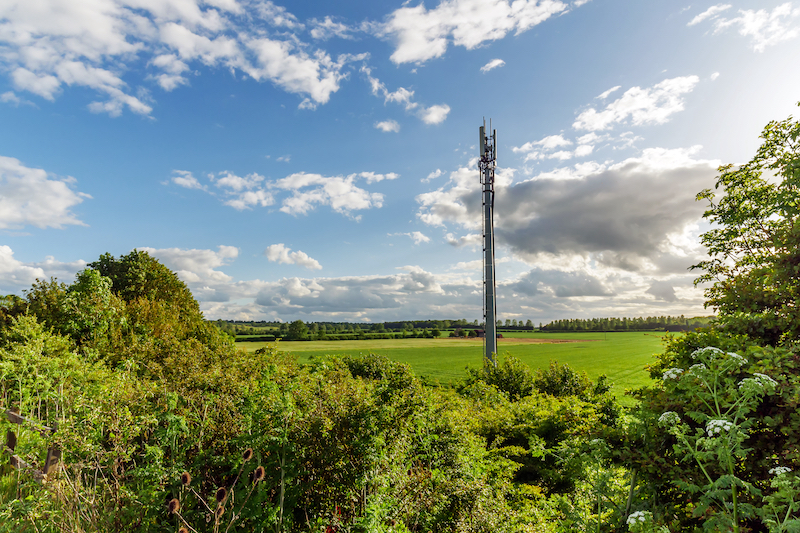Taller Mobile Masts in Rural England to Close Digital Divide

The government is overhauling planning rules to permit the construction of mobile masts up to 30 metres tall in the English countryside, in order to boost connectivity for rural communities.
Current regulations limit the height of mobile masts to 25 metres, or 20 metres in national parks and areas of outstanding natural beauty (AONB).
Under new proposed rules, telecoms providers will be able to install new masters up to 20% higher and increase the height of existing masts by five metres and their width by two metres. Firms will continue to need the approval of local councils to build new masts.
The additional height and width will allow more equipment to be fitted to mobile masts, improving phone signal in remote areas and reducing the number of new masts required.
Some of the taller masts will be used to deliver the Shared Rural Network, a £1 billion plan for mobile operators EE, O2, Three and Vodafone to share infrastructure in remote areas. The scheme will allow mobile users to connect to any available network for no additional charge. It’s expected to deliver 4G to 280,000 homes and businesses and 16,000 kilometres of roads, giving the UK 95% 4G coverage by the end of 2025.
The taller masts will also be used in the rollout of 5G, the faster, next-generation mobile network that is just gaining ground in the UK.
Many rural communities suffer from irregular and bad quality mobile signal, isolating residents and stymying local businesses. Taller mobile masts will help close this digital divide, the government said.
Digital Secretary Oliver Dowden said: “We want to level up the country and end the plague of patchy and poor mobile signals in rural communities.
“Today we are setting out plans to make it easier for mobile firms to transform connectivity in the countryside and propel villages and towns out of the digital dark ages - providing a welcome boost for millions of families, businesses and visitors.
“These practical changes strike a careful balance between removing unnecessary barriers holding back better coverage, while making sure we protect our precious landscape.”
Taller masts will likely draw the ire of some rural residents, who object to changing the landscape. But the government says that increasing the height of existing masts will reduce the number of new masts which must be installed.
Rural communities will also reap the economic benefits of a most robust, reliable mobile network. As 5G is rolled out, they’ll also be able to take advantage of innovations such as remote healthcare, self-driving vehicles and smart appliances.
Read on our blog

With the government poised to implement tough new measures to...

Budget broadband provider TalkTalk has been notifying customers via email...

A year-long investigation by charity Citizens Advice has revealed a...

Education Secretary Nadhim Zahawi has announced a new commitment to...
